After a seven month stint in Southeast Asia with a home base in Ho Chi Minh City, I’ve been sharing a lot about my travels across Vietnam. In this comprehensive Vietnam Travel Guide, I’m focusing on the logistics including when to go, transportation, and what to include in your itinerary. Specifically, how travellers can best explore this stunning country from the fog shrouded rice terraces of Sapa and the massive caves of Phong Nha to bustling streets of Saigon or windswept beaches of Nha Trang. There are nearly 330,000 square kilometres to traverse in Vietnam, and some routes are certainly easier than others in the rapidly developing nation of nearly 90 million people.
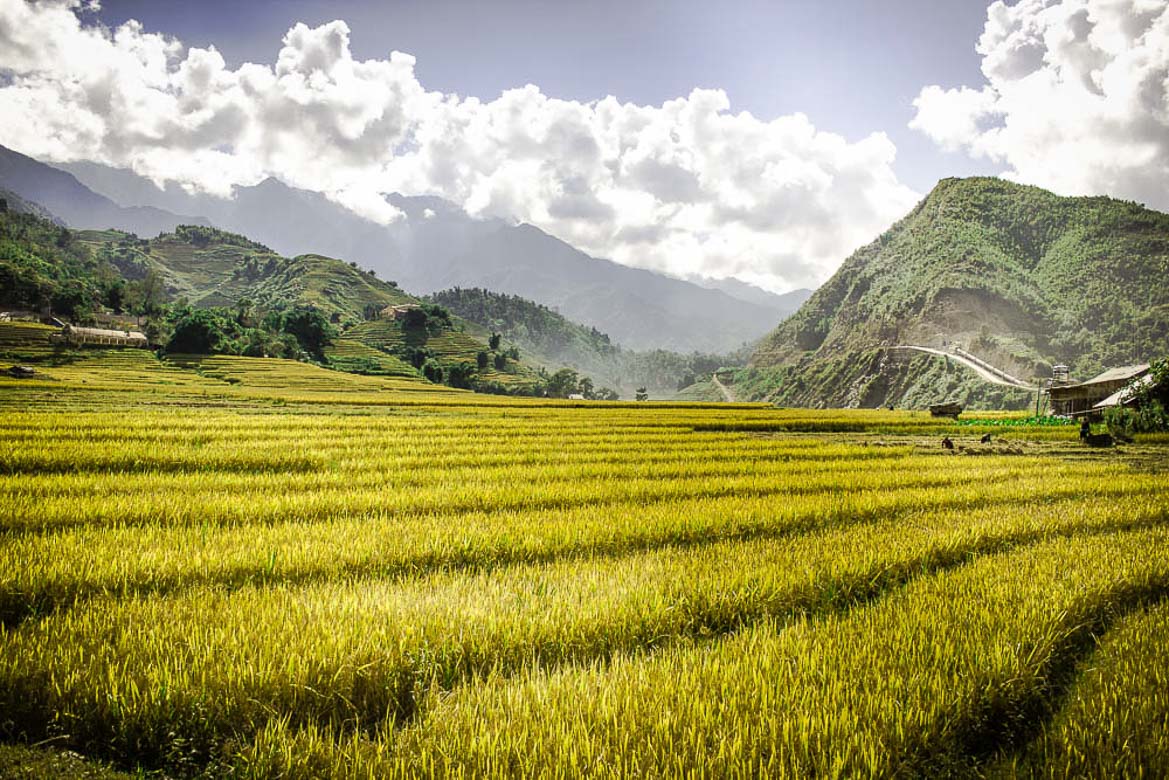
Here are my best travel hacks gleaned through extensive travel in the country to help take the stress out of travelling Vietnam:
Vietnam Travel Guide: When To Visit
Consider The Seasons
Climates and geography change drastically from the North to the South of Vietnam. As a result, there is no simple answer when it comes to the best time of year to travel there. Vietnam experiences three different weather systems over 2,000 miles of coastline. Because of the vast range it offers, there is always both a ‘high season’ and ‘low season’ somewhere at any one point in time.
Broadly speaking, April through October brings with it the hottest and wettest season, which is capable of crippling the hopes of even the most hearty of travellers. May or July being quite possibly the worst in the South with as much as 190mm of rain in Ho Chi Minh City. The Northern capital of Hanoi sees rain peak later, in July to August, with upwards of 200mm of rain through both months. In my experience, any “low season” discounts you may receive for tour or accommodation booking is simply not worth it for most travellers. It will rain each day. Correction, it will downpour for a few hours each day in the late afternoon. Overall, fall (Oct-Dec) and spring (March-April) generally offer the most traveller friendly weather ideal for those looking to explore multiple regions.
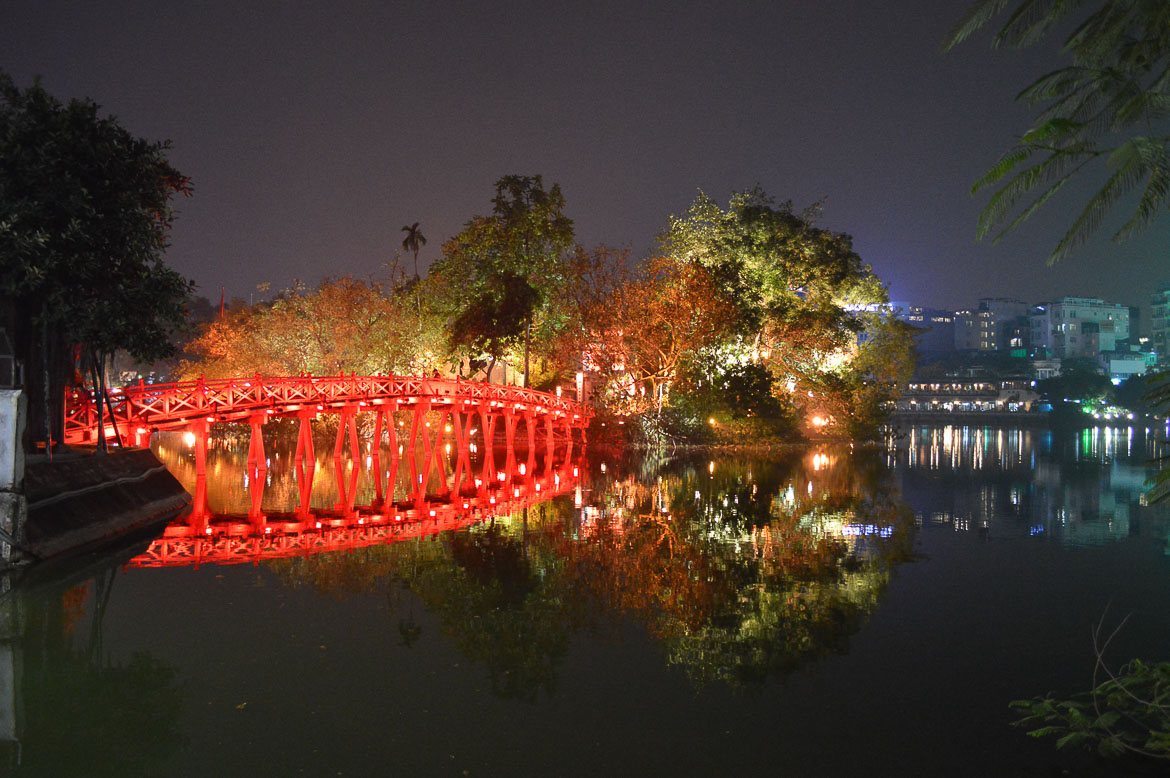
From North to South Vietnam:
Sapa: Consider March-April for good trekking weather, but you’ll have to contend with the risk of foggy views. It is hottest, wettest and busiest with domestic travellers July-Aug. Ultimately, Oct – Nov is ideal, not too cold yet and mainly sunny.
Hanoi/Halong Bay: Popular year round. It follows the basic principles of hot and humid in summer and cold and dry during winter. My recommendation is to travel from Oct-April.
Phong Nha: March-April is best for pleasant trekking temperatures between 20-25°C. Sept-Nov are the wettest with several treks closed while Dec-Feb can be very cold.
Da Nang/Hoi An: Feb-April is idea for touring around, while May-July sees temperatures increase, which is perfect for nearby beaches. Eventually heavy rain comes after July, reaching peak levels in Oct and Nov.
Hue: Jan-Aug is ideal, as heavy rains come before, and extreme heat comes follows this period.
Nha Trang: Enjoys a longer dry season from Jan-Sept, however travel is best during the earlier part of this period. October and November bring massive amounts of rain capable of ruining your beach vibes.
Ho Chi Minh City/Mekong Delta: Dec-March is best to avoid the humidity and rain, just be mindful of Christmas and Tet holidays. Wet season occurs May through October, but late summer brings with it the brunt of the rain in the form of strong afternoon showers. It’s a good idea to monitor weather in the Delta carefully, as flooding can severely impact ease of travel in the region.
Phu Quoc: Popular year round beach destination, though clear skies are only guaranteed during the South’s Dec-March dry season.
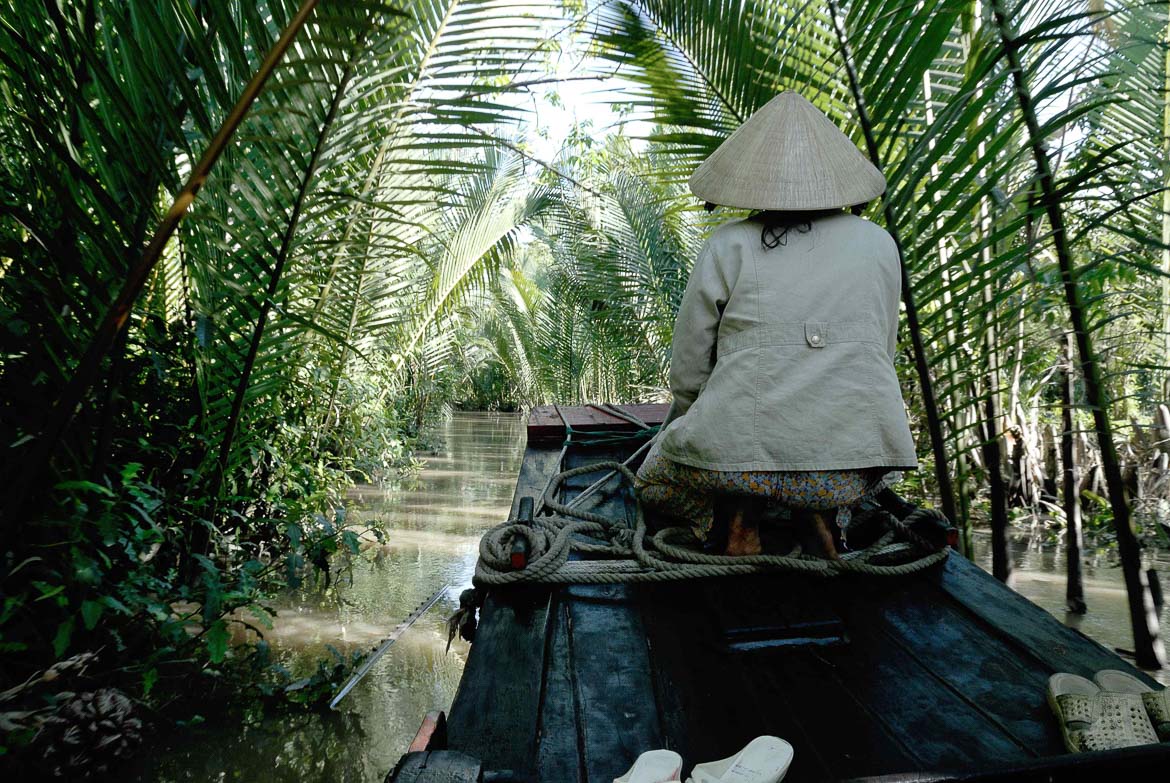
Don’t Forget Holidays
Tet, the Vietnamese Lunar New Year, entails two weeks of celebration starting around the last week of January. During this period, particularly the central four day weekend of celebration, major cities become ghost towns as people return to their hometowns. Ho Chi Minh City is empty. Most shops and notable travel experiences close, creating a beyond low key environment for travellers. Likewise, travel prices increase by 25-200%. Buses and trains in particular book up long in advance. Tet, and more broadly, Chinese New Year, create an interesting conundrum for travellers and locals alike – you’re bored if you stay, but you’re paying for crowds if you go. Either way, plan accordingly.
What about Western ‘Christmas’ and ‘New Years’? While most large cities participate in the commercial pageantry of Christmas through the month of December and some even set off fireworks on December 31st, there is actually no state holiday for either of these dates. You’re likely to see families in streets on Christmas eve, children dressed in red costumes, but that’s about it. Commercial operations continue as normal. Though some higher end accommodation options may have a premium charge or mandatory dinner for guests, hostels operate business as usual. They do tend to book up well in advance due to the crush of Westerners who use the late December vacation period to travel abroad.
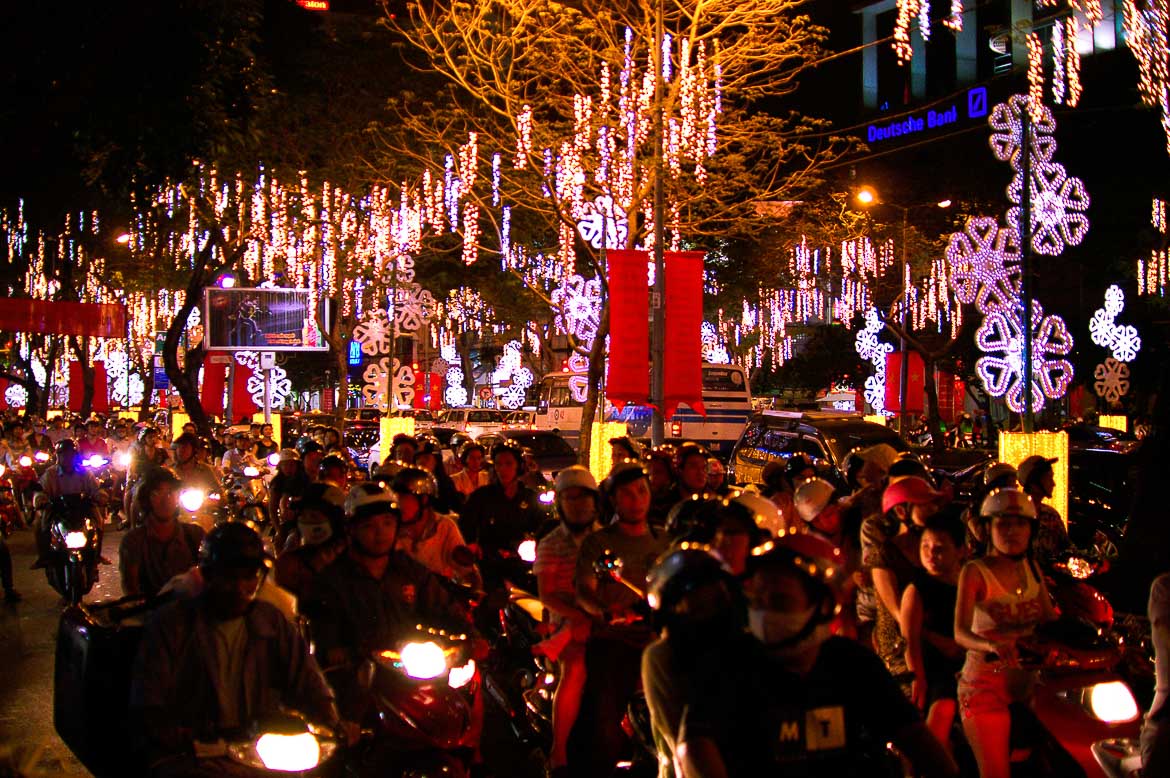
Vietnam Travel Guide: How To Get Around
Overnight Trains
Train travel can be easy, scenic and cheap, particularly along the central eastern coast. Travel by train is perhaps most famously associated with Sapa in the remote northern rice terraced mountains of the country, where there is no airport. A newly built highway connects Hanoi to Sapa, with several buses departing for the seven hour drive daily. Nonetheless, trains are the most popular way to get to Sapa.
Both for the nine hour overnight journey to Sapa (actually to Lao Cai, the nearest station to Sapa, which still requires a further 45 minute drive), and any other train travel of notable length, I strongly suggest opting for a ticket in a four berth soft sleeper car. Well worth the premium price versus the six berth (literally not enough space to sit up) or seats (often crammed). For extra privacy “VIP”, two berth soft sleeper cars are available. Spoiler alert – VIP cars simply fold up the upper bunks of the four berth cars. The cost for a VIP cabin is, logically, four times the cost of a single ticket in a four berth cabin.
Regardless of your ticket type, you will have trouble sleeping and the train will be bumpy and sway. Further, despite overnight train schedules that facilitate touring the same day, you’ll likely regret booking strenuous hikes the same day you arrive in Sapa, or any destination. It is strongly advised that you have onward travel from the train stations booked in advance, saving yourself the hassle of negotiating in the early morning hours after a pretty brutal night’s sleep. Most hotels and hostels will happily coordinate private car or join in mini bus transfers in advance ($3-5 USD/pp) to help you avoid paying more than you need to from taxi scams or feeling abandoned far from town.
To book train travel in Vietnam use booking site Baolau. They also offer booking services for trains, flights and ferries across Vietnam. Recommended by Lonely Planet, Tripadvisor and Seat61, the site is incredibly user friendly, going as far as to show specific seats for selection on trains. Ease of payment – online without hidden fees – is also an advantage in comparison to many other operators who don’t have sophisticated systems and charge as much as an extra 8% for PayPal transactions. If you prefer the ease of having someone else book and are headed specifically to Sapa, Sapa Sisters Trekking Adventures can arrange train and bus tickets and have a slick user interface on their website. Best of all, they don’t add extra fees.
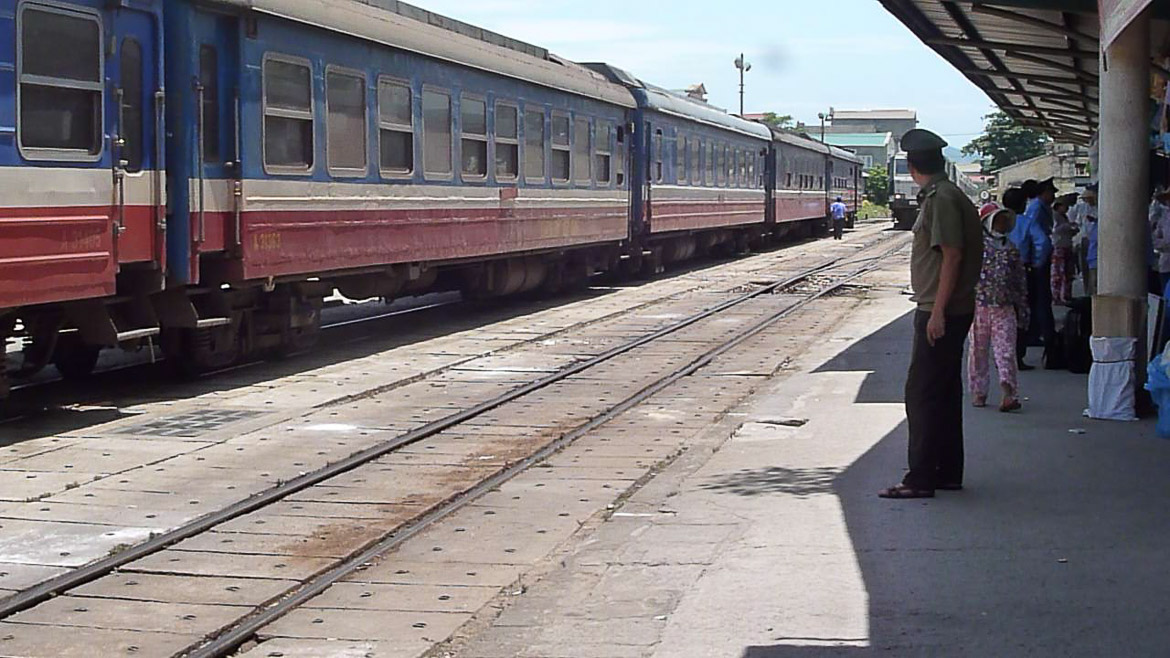
Trains vs. Planes
Many backpackers opt for trains and buses due to price. However, for anything further than the Central Vietnam stretch from Vinh to Danang, you better prepare yourself for a very long and, at times, bumpy ride. Particularly for travel to and from Ho Chi Minh City in the south or Hanoi in the north, the truth is that domestic flights are an incredibly cheap and attractive option.
Most flights on budget carriers are $20-65 USD one way. Often times there is actually no price premium versus a train or bus (as long as you’re not having to buy substantial checked luggage allowance). If there is a premium, it’s well worth it once you factor in convenience. Here’s an example: A mid week Jet Star flight from Ho Chi Minh City to Da Nang is $22 USD (inclusive of all fees, 7kg carry-on only, add extra $6 for 15kg of luggage as needed). Flight itself is just under 1.5 hours long, maybe 3 hours total inclusive of airport waiting time. The same train trip costs $48 for hard seat, or $68 for soft sleeper bunk but lasts close to 18 hours. During which time, you’ll need to spend even more on food.
Taking the journey between Hanoi south to Dong Hoi as another example, you have the choice between $51 USD 1.5 hour Vietnam Airlines flight, or $25 USD 10.5 hour train ride. Yes, flying in this instance is about twice the price. However, many will find the saved time more valuable if they only have two weeks in the country versus a few months. I recently spent 19 out of 24 hours on two consecutive train rides ‘trying to save a buck’ from Sapa to Dong Hoi. I firmly regret it. However, to each their own.
Cheap Flights
Budget carriers such as Jet Star, VietJet, Tiger Air (Singapore based) and even Nok Air (Thailand based) often have flash sales reducing base fares to as little as $5 USD. However, they carry substantial fees and baggage charges so you’re not entirely off the hook on costs. Of particular note, I recommend signing up for VietJet’s e-newsletters. It includes a weekly alert prior to their rotating weekend sales that occur Thursday through Sunday. For any travel from either Hanoi or Ho Chi Minh City to Thailand, I love Nok Air for its free onboard wifi, 15kg of free checked baggage and complimentary snacks – features that none of the other budget carriers offer. Overall I’ve found Jet Star to consistently be the cheapest carrier, though they are infamous for frequent delays.
Quick tip on managing the cost of your flight – ensure you correctly account for luggage while booking. Budget carriers tend to be sticklers on weight, much more so than your average North American airline. If your carry-on is too large, or luggage heavier than your pre-paid limit, prepare to pay. A lot. Paying extra at the airport is always the most expensive option, sometimes adding $4 USD per kg. As such, I recommend adding on weight while booking online when it’s cheapest time to do so. On average, 15-20kg will cost you $5-8 USD, each direction.
Flight booking website skyscanner.com is a go-to favourite when it comes to air travel, almost always showing cheaper options than Google Flights or Expedia. The trick is to compare on Skyscanner, then follow the links to book directly with the carriers themselves. And be sure to enter required info for loyalty points programs as needed. Fare tracking app Hopper, is also a great tool to monitor and predict changes in flight costs.
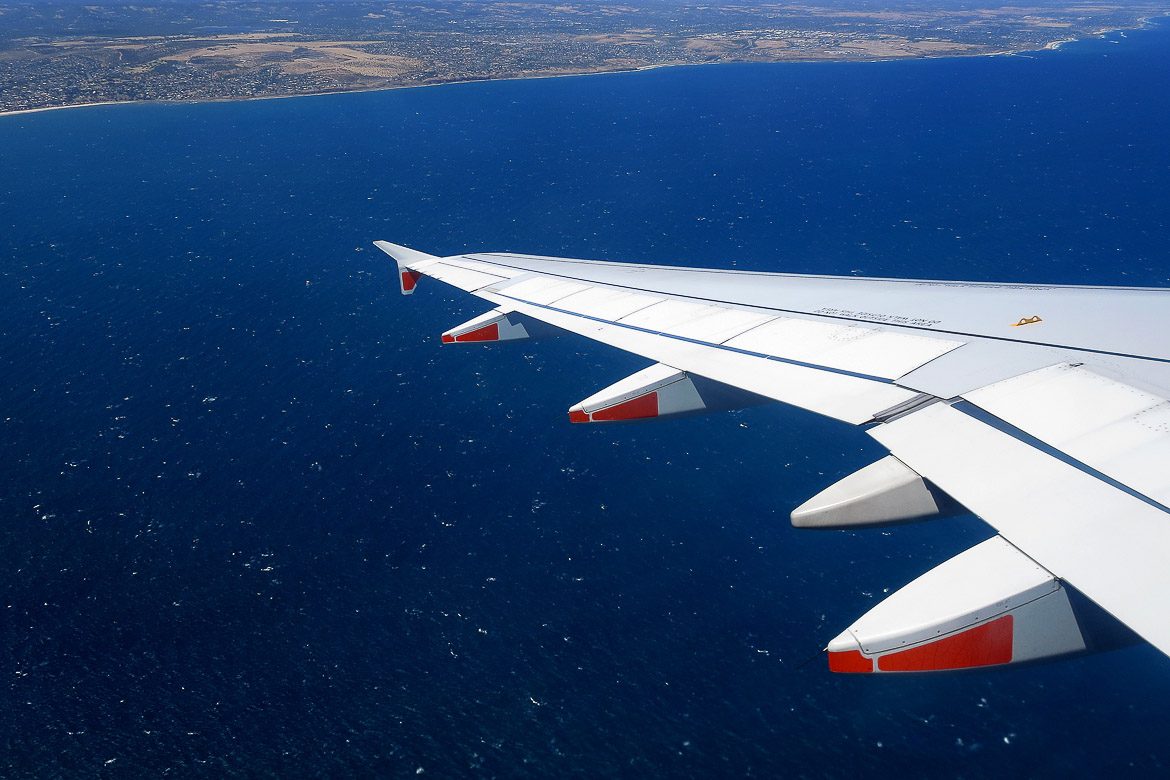
Embrace the Open Road
For the slightly more adventurous traveller, why not travel via motorbike? Vietnam Coracle is an excellent site that has extensive resources for DIY bike trips across the country. Step by step instructions and photos mean even a novice can try their hand. Content ranges from one day to two month adventures. Though you don’t legally need a Vietnamese license to rent a motorbike, I do recommend a high comfort level with motorbikes or scooters, particularly for extended trips. And a warning, most travel insurance is void unless you have a valid license in the country in which you’re driving.
Zipping Around Cities
Getting around cities in Vietnam is incredibly easy. Metered taxis from Vinasun (white) or Mai Linh (green) are the most reliable way to travel if you have a group. Smaller operators often charge higher fares per kilometre, which can result in a ride costing nearly double what it should. Ouch.
Uber and Grab ride sharing apps are growing in popularity in the larger cities and typically offer 25-50% savings off regular cabs. Grab bike is my winning pick for knowledgeable drivers, general availability and safety. In smaller towns like Sapa, Hoi An and Da Lat, these providers don’t exist yet, so travellers trying to stick to a budget often opt for the services of local Xe Om drivers. It’s unregulated, unmetered, and therefore potentially unpredictable. But it’s also far cheaper for one person getting around versus a taxi. Scooters are also much faster given their ability to weave between cars. Be sure to negotiate the price and clearly confirm the location before the start of your trip with the driver.
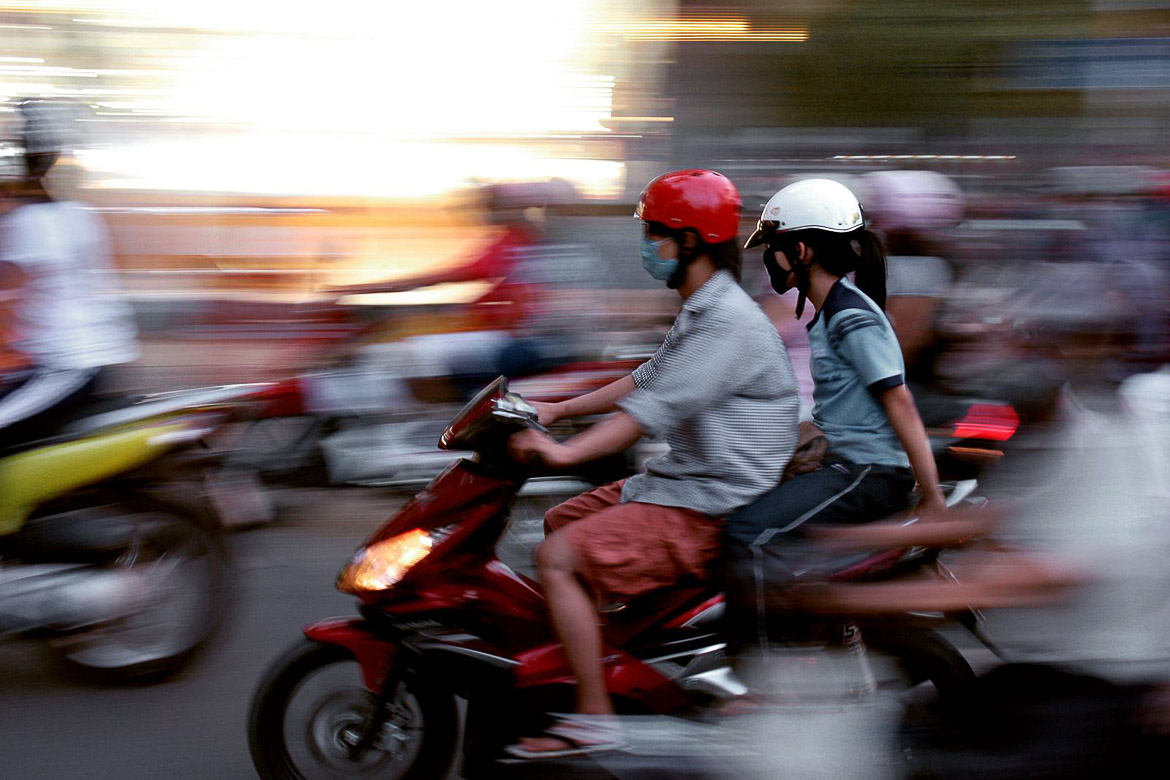
Vietnam Travel Guide: What To Do
I love DIY and independent travel. In most cases, Vietnam is an easy country to string together super cool experiences on your own. However, there are instances when getting help from the pros makes the most sense. I’ve found that some organized tours are capable of showing you more of the beautiful country than you could have possibly discovered on your own.
By Destination
Sapa: Although there are several socially responsible enterprises operating in the region, Sapa Sisters stands out as one of the leaders. The all female guide staff, who share ownership, deliver custom single and multi-day treks of the region. Prices start from around $40 USD/pp for one day treks, with sizeable discounts as group size increases. They also coordinate homestays, market tours and transport before or after your trek.
Halong Bay: There are several options for single-day to multi-day boat tours of the famed UNESCO world heritage islands. Oasis Bay Party Cruise specifically caters to 18-30 year old travellers with a strong drinking element. Food is delicious and boat accommodation better than one would expect. A winner in terms of value for money, as long as the weather is in your favour and your liver is healthy.
Phong Nha – The world famous mega caves of Phong Nha-Ke Bang National Park are spellbinding. Oxalis Adventure Tours is the only tour company with government permission to operate the more elaborate multi-day expeditions into the biggest caves. To travel far beyond normal day trippers, you’ll need a substantial budget (Two day/one night trips start at $290 USD/pp) and book up several weeks or even months in advance. Rest assured, the experience is most certainly worth it.
Phu Quoc: Jerry’s Jungle Tours offers a range of one day motorbike rides to multi-day adventures around the beautiful island just off Vietnam’s southwest coast. While Jerry’s personality may be polarizing, we appreciate that he himself leads each and every tour. All tours are private and fully customizable. Jerry’s knowledge of local Phu Quoc gems from quiet sandy beaches to hidden seafood restaurants is second to none. Better yet, there is no premium for tour bookings of just one person – a rare bonus for solo travellers.
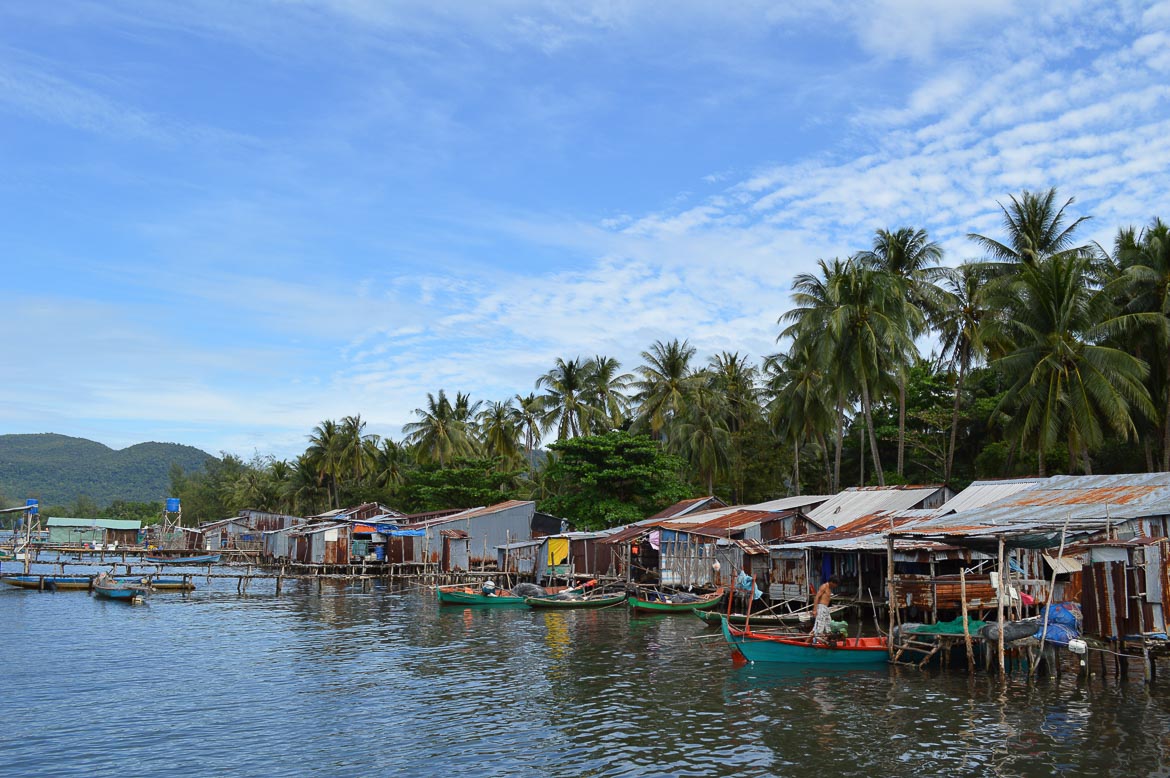
By Travel Interest
Yoga: You don’t have to be a full fledged yogi to appreciate a weekend of balanced activity. Every 2 months, the team at Chick’s Club offers three day yoga and healthy living retreats at rotating locations across Vietnam. Food is epic, yoga is fulfilling, extracurriculars such as group hikes, swims and movies are engaging. The price tag is also as affordable as it gets. If the Chick’s Club schedule doesn’t work for your travel plans, BookRetreats.com is sure to do the trick. The Airbnb of wellness retreats, it’s huge repository of global events includes a growing number in Vietnam.
Cycling / Grasshopper Adventures: I cannot say enough good things about Grasshopper Adventures, who offer bike trips throughout Vietnam and the rest of Southeast Asia. From one day bike tours from Ho Chi Minh City exploring the Cu Chi Tunnels or Mekong Delta to two week excursions traversing the country, Grasshopper Adventures offers a unique and unparalleled perspective. In my experience, a Grasshopper excursion is a perfect addition to any Vietnam travel itinerary.
Photography: If you’re passionate about photography, consider travel photography tours which allow you to see unique perspectives across Vietnam, while upping your camera skills. From north to south, Ethos (Sapa), Oxalis Adventure Tours (Phong Nha), Hoi An Photo Tour and Workshop, and its affiliate Pics of Asia (Central Vietnam), and Vietnam Photo Adventures (Ho Chi Minh City/Mekong Delta) all get top marks.
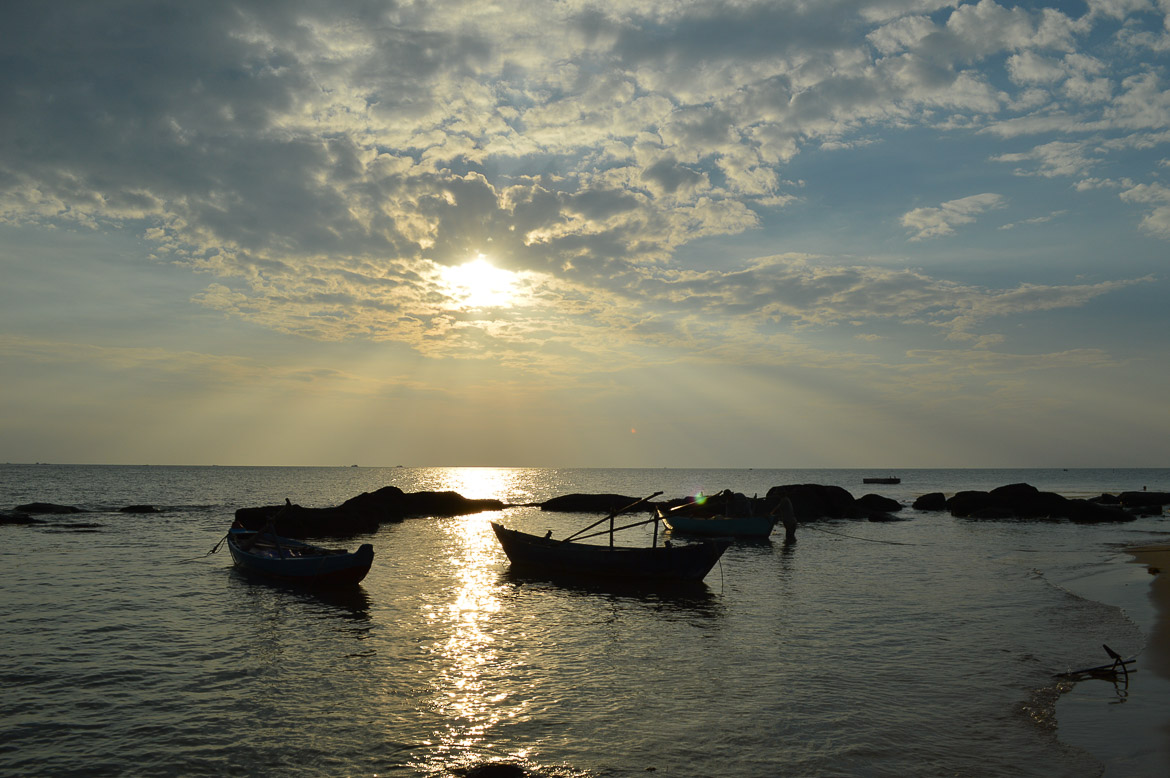
Beer: We see beer as a noble personal interest – visit our sister site Prostly if you want to understand just how much interest we take in it. Ho Chi Minh City is home to Vietnam’s booming craft beer scene, with new taproom and brewery openings on a near monthly basis. It’s possible to develop your own quasi walking tour using Prostly’s recent article ‘Inside the Burgeoning Saigon Craft Beer Scene’. Thirsty travellers are also able to join tours from the likes of Vespa Adventures for their literal fill of craft beer. Vespa’s craft beer tour ventures to no less than five locations across the city, tasting 15 beers and food that goes along with it. Drinks are unlimited as expert guides safely transport travellers around the city on retro Vespa scooters. Craft Beer Vietnam is a Facebook group that aggregates news of tours, taproom openings and tons of other useful info for likeminded travellers. It’s definitely worth checking out as you plan your tipples.
Vietnam Travel Guide: Extra Planning Details
Communication is Key
Even the most ardent trekker realizes that sometimes during travel in a foreign country it’s handy to have a functioning phone. While free wifi exists in restaurants and hotels in most cities, having a smartphone to help you navigate directions, translate Vietnamese or post social media updates is helpful. As long as your phone is unlocked, getting a local SIM card and seemingly unlimited data plans is a relatively quick and painless process that won’t break the bank. We’re taking $3-5 USD for a local SIM card and another $3 for a month’s worth of data. Cards are for sale at airports and various corner stores including a plethora of 711s. Staff at phone stores will take care of the entire setup for you in a matter of minutes. Suffice it to say, if you’re in Vietnam for a week or more, I definitely recommend a local SIM.
Money Matters
The official Vietnamese currency is the Vietnamese Dong. $1 USD is approximately 22,700 VND as of April 2017.
While ATMS abound in most large cities and credit is accepted at established hotels and restaurants, cash continues to be king. Many tour operators tack on the credit card processing fee or 1-3% versus absorbing it themselves. Smaller hostels and guest houses may be cash only – despite operating with Agoda or Booking.com and taking your credit card details for deposit purposes on those websites.
If you’re exchanging funds take note: banks have limited hours, usually 9am-4:30pm, but they close 12-1:30pm for lunch and a good ol’ siesta. They also close on weekends. Banks offer better exchange rates than airports, however, often times jewellers and independent money exchangers beat the banks (you just have to be confident it’s not counterfeit). Either way, exchanging at a bank or jeweller is likely to only cost 0.5-0.9% commission, far less than the 2-3% from the banks of North America. As such, it’s best to wait to exchange until you arrive in Vietnam. As is the case across most of Asia, larger bills receive more favourable rates, so bring as many $100 bills as possible. Remember they also need to be crisp! There was actually a period around Christmas 2016 in which there was a shortage of large USD bills, creating a profit scenario of a few dollars for anyone who converted USD to VND. Bonus!

Learn the Language
Learning a few key words in Vietnamese goes a long way in helping you successfully navigate the country. While thrusting your smartphone showing a screen with Google Translate towards someone will work on most occasions, it’s not overly difficult to learn a bit. It will help you barter and be a respected traveller vs tourist.
- Hello – Xin Chao (“sin chow”)
- Goodbye – Tạm biệt (“tam bee it”)
- Thank you – Cam on (“come on”)
- Yes – Vâng (“vuhng”)
- No – Không (“kaumng”)
- Stop – Ngừng lại (“young lie”)
- How much is it? – Bao nhiêu tiền? (“bow neuw tee-en”)
- It is too expensive – Mắc quá (“mack wa”)
- Where’s the toilet? (informal) – Cầu tiêu ở đâu? (“koh tee-oh uh doh”)
- I don’t understand – Tôi không hiểu (“toy kohng hugh”)
- Beer – Bia
- Not very spicy, please – Không phải rất cay xin
- Numbers:
- One – một (“moht”)
- Two – hai (“high”)
- Three – ba (“bah”)
- Four – bốn (“bone”)
- Five – năm (“nuhm”)
- Six – sáu (“sao”)
- Seven – bảy (“bye”)
- Eight – tám (“tahm”)
- Nine – chín (“cheen”)
- Ten – mười (meui)
Respect the Customs
- Much like elsewhere in Southeast Asia, there are some key social customs that locals abide by. Travelers are well served by observing, or at least being cognizant of them:
- Avoid public displays of affection towards members of the opposite sex, or even touching them.
- People of the same gender commonly sit very closely, or hold hands while walking as a sign of friendship. If you try to walk between two such people, they may be confused and expect you to walk around them.
- Avoid pointing with your finger (use full hand instead). And pass items with two hands (particularly when handling money or dishes during a meal).
- Temples are sacred places where shoes and hats are to be removed. Clothing for both genders should cover shoulders and knees.
- Do not touch another person on the head or shoulder, or pass objects over someone’s head.
- Safety First
I have never personally experienced any acts of violence or minor theft of any kind in Vietnam. Alas, drunkenly misplacing your phone does not count as theft. However, common sense will help you in Vietnam. Travellers should not leave valuables such as smartphones, flashy jewellery or wallets and purses easily flapping about. There are stories of people zipping by on motorbikes and stealing phones right out of the hands of oblivious tourists. Keep your purse and any other valuable belongings tucked away from traffic while walking on the sidewalks. When navigating crowds it’s best to hang your backpack in front of you to keep an eye on it.
The sun sets quite early in Vietnam, between 5:30-6:00pm. This means you’ll very likely be navigating in the darkness of “night” if you’re out for dinner and drinks. Be mindful that smaller towns may not have any street lights at all. In my experience, you’re more likely to cross paths with a hefty rat than a would-be-thief, but neither are particularly pleasant encounters.
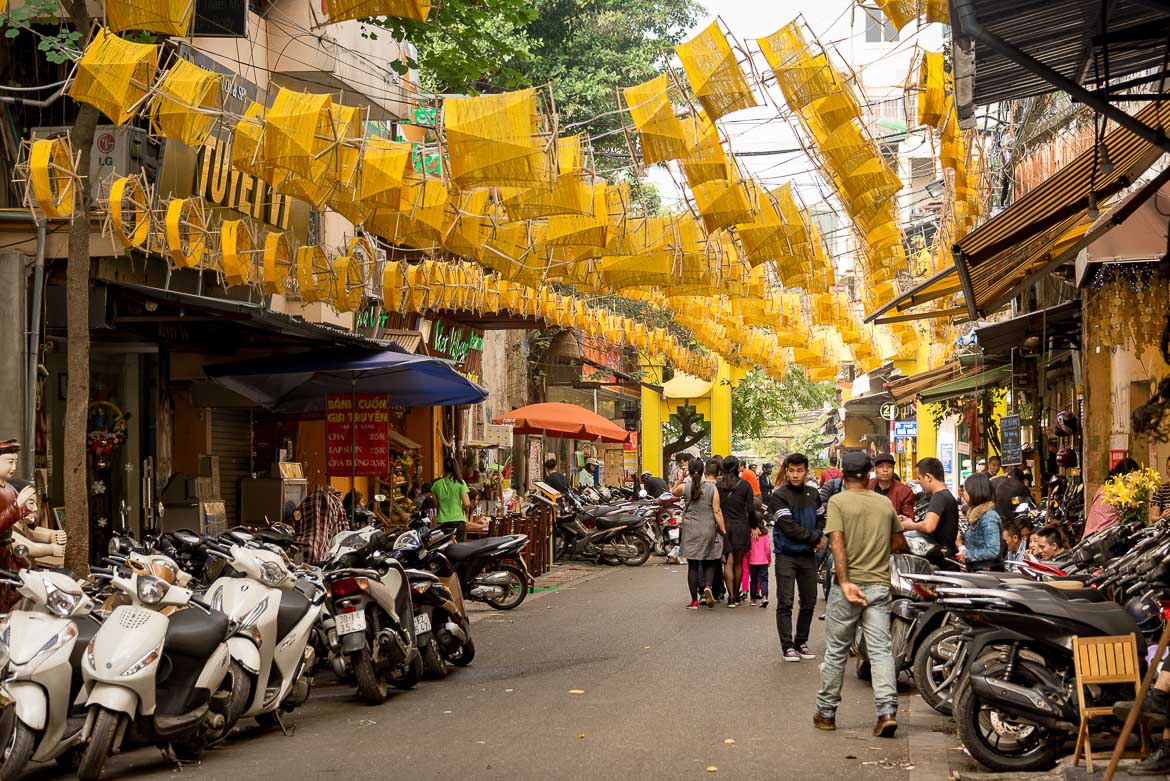
That’s a wrap on my Vietnam Travel Guide. If you’re planning your own Vietnam travels, let me know in the comments. Peruse our other Vietnam articles for more inspiration in planning your trip.
Photos for Vietnam Travel Guide courtesy Madeline Burch and Flickr contributors lightwrite, M M, Paulus Eddi Pramono, eosdude, Martin Terber, Steffen Kemprath, xiquinhosilva, Matt Worthington and Joseph Yen.
Make your next trip the best one.
Departful is a full service travel agency creating truly exceptional travel experiences that are 100% personalized to you. Wherever you’re going, whatever your interests, we help you plan the perfect trip.
Madeline Burch
Madeline was born and raised in Toronto Canada, educated in marketing, and has worked in brand management and the alcohol industry for nearly a decade. In search of great drinks, stories and photos, she has travelled to South East Asia multiple times including a recent eight month stint based in Vietnam. From luxe travel to volunteer missions, she’s interested in it all.
6 Comments
Add comment Cancel reply
This site uses Akismet to reduce spam. Learn how your comment data is processed.


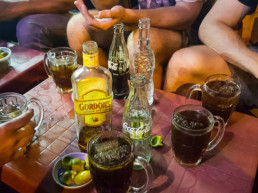
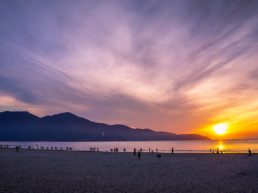
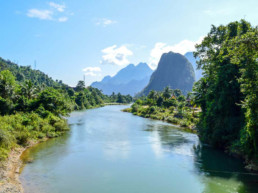
For money exchange we highly recommend to always verify the exact amount given, one of the tourist scam is to put a look alike dong print or for example 500 in the middle of a pile of 5.000. So better to stay sharp when money changing))
Dear Madeline, We will arrive in Hanoi and leave 2 weeks later from Saigon. As we started planning we realised that there is so much we want to see that the time might be too short (this we can not change anymore .-( ) … Could you give as some recommendations what we shouldn~t miss, how many days we should spend at the different locations? Do you work for any travel agency as well?
We will arrive in Hanoi and leave 2 weeks later from Saigon. As we started planning we realised that there is so much we want to see that the time might be too short (this we can not change anymore .-( ) … Could you give as some recommendations what we shouldn~t miss, how many days we should spend at the different locations? Do you work for any travel agency as well?
we love your articels very much. We will be in Vietnam for 14 day at the end of the year. The only think we booked untill now is our flight
many thanks
Krisztina
Hello Krisztina,
Happy to hear more people are traveling to Vietnam – it’s an incredible country. On our site you’ll find several articles about Vietnam (stretching from the mountains of Sapa in the north all the way to touring the Mekong Delta in the south). These articles may help you plan your trip and get a sense of what excites you the most. If you’d like help planning your adventure my colleague Lauren would be happy to help. She leads our travel agency division, you can reach her at lauren@departful.com.
Your itinerary will really depend on what type of trip you’re interested in. More inland hiking and caving adventures? beautiful relaxed beaches? busy cities? ancient ruins and interesting cultural activities? In terms of modes of transport, as you only have 2 weeks I would highly recommend taking flights to different cities. There are several budget airlines (maybe $25-75 per flight) and most flights would be under 1.5 hours anywhere you go. It’s a better plan than spending 18 or even 36 hours on a train or bus for about the same amount of money. So you would work your way south from Hanoi to ending in Saigon. Possibly making 2-3 stops in different regions along the way.
Good luck on your trip!
Thanks you your information. In Quang Binh Viet Nam have new cave “Hang Dai Tuong cave system
Hi Madeline,
This is such high quality travel guide to Vietnam and is exactly what I’m looking for. My friends and I are planning our trip to Vietnam, and still considering which are the best places to visit in Vietnam and what to do. Your guide helps a lot. I wonder if we could travel Vietnam by ourselves or should we book a tour from a local travel agency?
Miran
Thoroughly enjoyed the article on the Vietnam travel guide. Thanks for sharing.